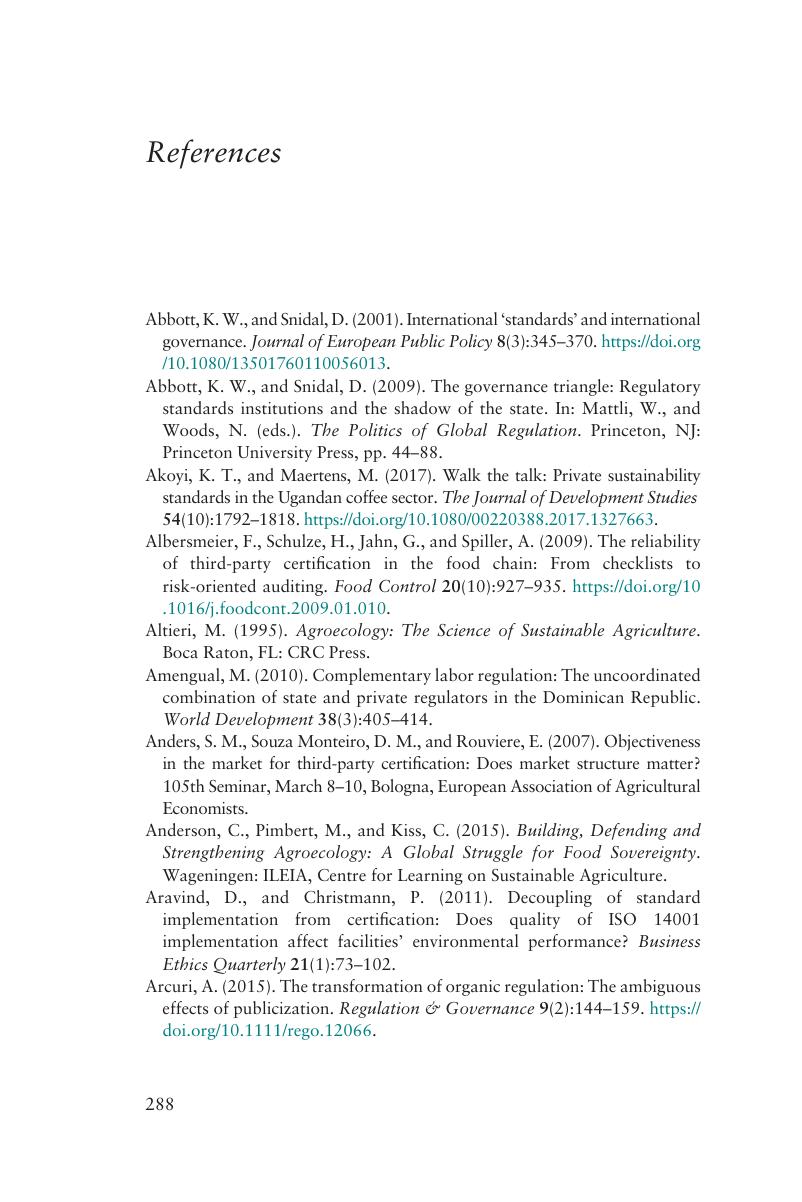 Selling Sustainability Short?
Selling Sustainability Short? Book contents
- Selling Sustainability Short?
- Organizations and the Natural Environment
- Selling Sustainability Short?
- Copyright page
- Contents
- Figures
- Tables
- Acknowledgments
- 1 Introduction
- 2 The Dilemma of Effective Private Governance
- 3 Defining the Goal of a Sustainable Coffee Sector
- 4 Changing the Market
- 5 Changing Farming Practices
- 6 Designing Effective Private Institutions
- 7 Interacting with Public Institutions
- 8 Conclusions
- Book part
- References
- Index
- References
References
Published online by Cambridge University Press: 28 April 2020
- Selling Sustainability Short?
- Organizations and the Natural Environment
- Selling Sustainability Short?
- Copyright page
- Contents
- Figures
- Tables
- Acknowledgments
- 1 Introduction
- 2 The Dilemma of Effective Private Governance
- 3 Defining the Goal of a Sustainable Coffee Sector
- 4 Changing the Market
- 5 Changing Farming Practices
- 6 Designing Effective Private Institutions
- 7 Interacting with Public Institutions
- 8 Conclusions
- Book part
- References
- Index
- References
Summary

- Type
- Chapter
- Information
- Selling Sustainability Short?The Private Governance of Labor and the Environment in the Coffee Sector, pp. 288 - 325Publisher: Cambridge University PressPrint publication year: 2020
